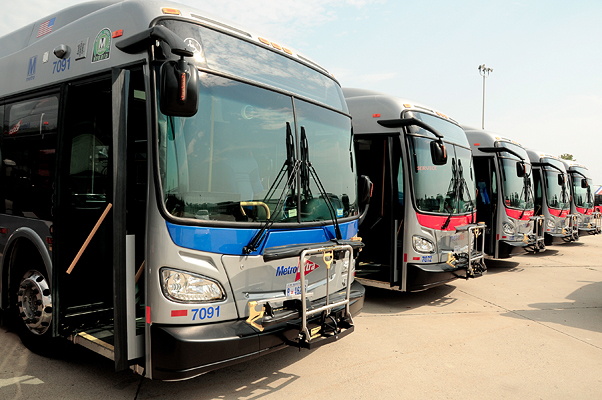All across the United States, public transit systems are working to ensure that investments in transportation services are having a positive impact on their regional economies.
By further investing in and expanding their services, public transit providers can help create new jobs, provide clean energy transportation alternatives, and better address the socioeconomic inequalities within their existing systems. In order to make this a reality, however, it is critical that transit systems consider a host of factors beyond just the economic impact of their investments when working to improve their services.
Three Investment Scenarios in the D.C. Metro Region
In an August 26th webinar on “The Economic, Social, and Environmental Impacts of Transit Infrastructure on Regional Economies,” experts from Regional Economic Models Inc. (REMI) and statistical consulting firm KPMG discussed a joint project they recently conducted to better understand how transit systems can use federal funding to drive short-term economic growth and long-term transformative changes in their services.
Utilizing the REMI TranSight and the REMI Diversity, Equity, and Inclusion models—which have helped regional and national transit providers better understand how investments in their systems would lead to improvements in their services—REMI and KPMG analyzed three investment scenarios in the Washington Metropolitan Area to gain a better understanding of the various economic, social, and environmental impacts that can result from enhanced transit funding. These case studies included examining investments in bus electrification, fixed guideway transit, and improved bicycle infrastructure over a 10-year period.
The analysis of the three case studies included a focus on economic growth, equity and workforce development, and the environmental benefits of clean energy investments. The project found that each of the investment scenarios—based on the region’s existing infrastructure and previously proposed improvements to transit services—led to varying beneficial outcomes:
- The analysis of the bus electrification scenario found that replacing the Washington Metropolitan Area Transit Authority’s (WMATA) entire bus fleet with electric buses and expanding services along critical transit routes resulted in the greatest reduction of carbon emissions of the three scenarios—a decrease of roughly 25,403 metric tons that would average approximately $1.5 million in annual cost savings.
- By investing in efforts to complete a fixed guideway transit system—known in the D.C. area as the Purple Line project—the study found that the service would create the largest share of jobs for minorities in the Metro area while also contributing the most to the region’s economy. This includes supporting roughly 3,275 jobs annually, with 65 percent of the created positions benefiting racial and ethnic minorities.
- The examination of the bicycle infrastructure scenario, which includes a significant expansion of the Metro region’s bike trails and lanes, found that it offered a less expensive template for reducing carbon emissions while still helping to boost the local economy. With the anticipated shift in car trips to bicycle use, the analysis found that investments in this plan would add $515 million in after-tax income while also reducing carbon emissions by roughly 5,294 metric tons annually.
National Implications of the REMI Model
While the D.C. region was chosen for the project because of its size and diversity of transit services, this type of multi-step analysis of transit investments can help local, national, and state agencies—regardless of whether or not they are urban or rural—determine where to best spend their infrastructure funding.
“We see this type of analysis being potentially useful for policymakers and transit agencies to evaluate projects, which is especially important as federal agencies focus on a broader set of contributions when assessing and funding infrastructure projects,” Dr. Federico Garcia, a managing director at KPMG said.


